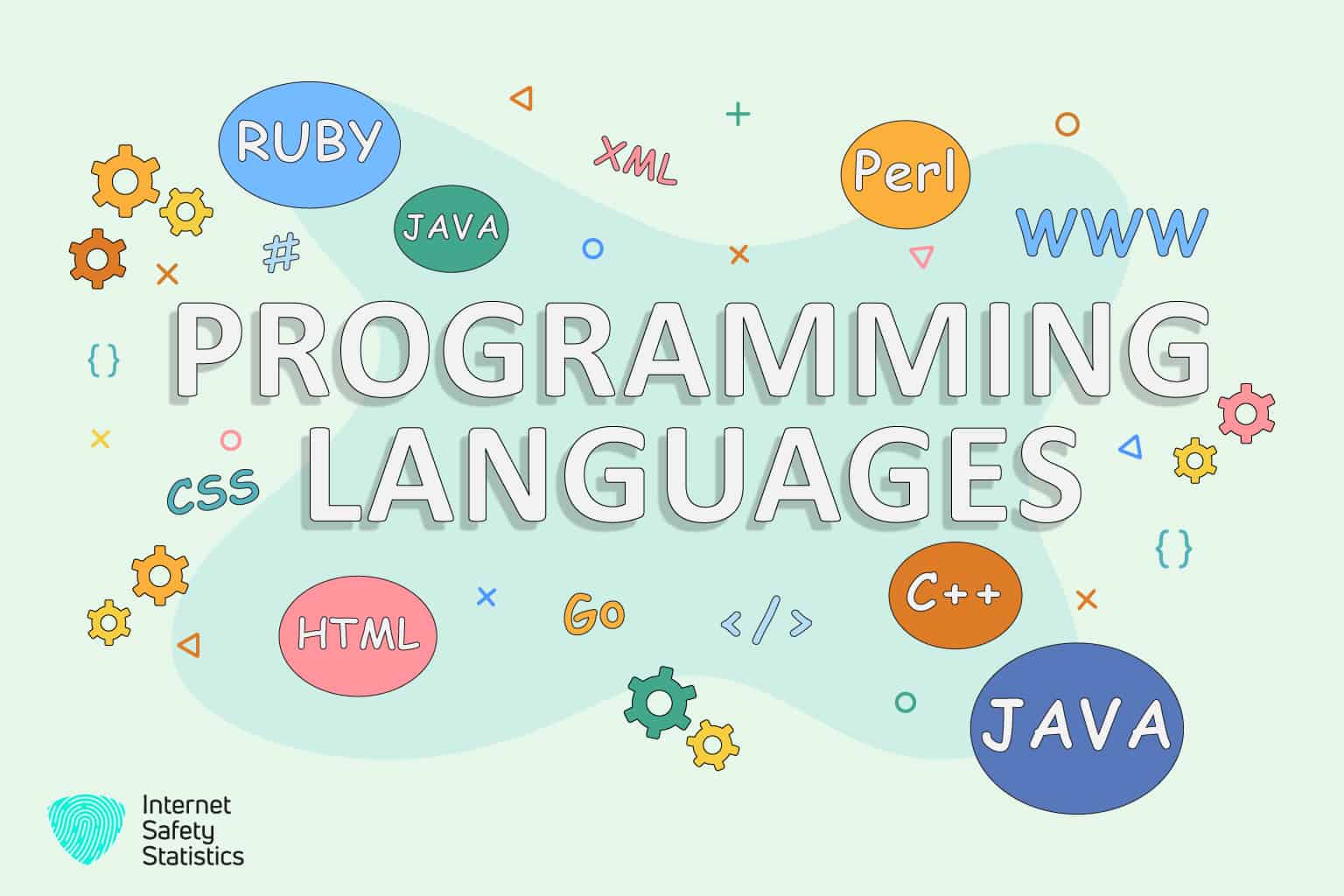
Programming languages play a fundamental role in the field of cybersecurity. These languages allow cybersecurity professionals to write code that can be used to detect, prevent, and mitigate cyber-attacks. In this article, we will discuss the programming languages that are commonly used in cybersecurity and their features.
Cybersecurity is more crucial than ever in the modern world because organisations like governments and companies are susceptible to hacking and data theft. One of the critical components of cybersecurity is programming languages. Programmers use different programming languages to write software that detects and prevents cyberattacks.
What Are the Most Common Programming Languages Which Are Used in Cybersecurity?
The cybersecurity industry uses several programming languages to create tools and applications to protect systems from cyberattacks. Here are some of the computer languages most frequently used in hacking:
Python
Python is a high-level, interpreted computer language Guido van Rossum introduced in 1991. Its syntax emphasises simple, readable code and makes it simple to understand and create.
Python is an interpreter that can be used for various jobs, from web programming and scientific computing to data analysis and machine learning. It is often used in data science and artificial intelligence due to its extensive libraries and tools that support these fields.
Python is simple to learn and uses high-level computer language. It is a popular choice for cybersecurity because of its simplicity and readability. Python is used to build tools and scripts for automated penetration, web application, and network security testing.
Some key features of Python include its dynamic typing, which allows for flexibility in variable types and easy code writing, and its object-oriented programming support. Python also supports functional programming and has a large and active community contributing to its development and maintenance.
Python has gained popularity recently due to its ease of use, versatility, and large community support. Some popular libraries and frameworks built on Python include NumPy, Pandas, TensorFlow, Flask, and Django.
Python is open-source, meaning it is free to use and distribute, and developers can access and modify its code to suit their needs.
C/C++
C and C++ are low-level programming languages that build operating systems, compilers, and applications. They are used in cybersecurity to create security tools, such as network sniffers, port scanners, and password crackers.
C is a low-level language that is often used for developing system-level software. It is fast and efficient, which makes it ideal for developing security tools such as rootkits, keyloggers, and other malware. C is a popular choice for developing exploits and vulnerabilities, allowing for fine-grained control of system resources.
C+ Often used to create high-performance software, C++ expands the C computer language. Its object-oriented features and low-level control are ideal for developing security tools and exploits. In addition, C++ is often used for developing reverse engineering tools and creating proof-of-concept exploits.
Java
Java is a high-level programming language to build secure applications. It is used in cybersecurity to create tools for network security testing, malware analysis, and forensic analysis.
Java is a popular object-oriented programming language first released in 1995 by Sun Microsystems (now owned by Oracle Corporation). Java programmes can operate on any operating system with a Java Virtual Machine (JVM) installed because it is intended to be platform-independent.
Some key features of Java include its automatic memory management, which makes it easier for developers to write code without worrying about memory allocation and deallocation. Java also supports multi-threading, which allows programs to perform multiple tasks simultaneously.
Java is widely used to develop web applications, mobile applications, desktop applications, and enterprise software. Some popular frameworks and platforms built on Java include Spring, Hibernate, Android, and Apache Hadoop.
Java is popular for enterprise software development due to its security features, scalability, and reliability. Java is also open-source, meaning developers can access and modify its source code to suit their needs.
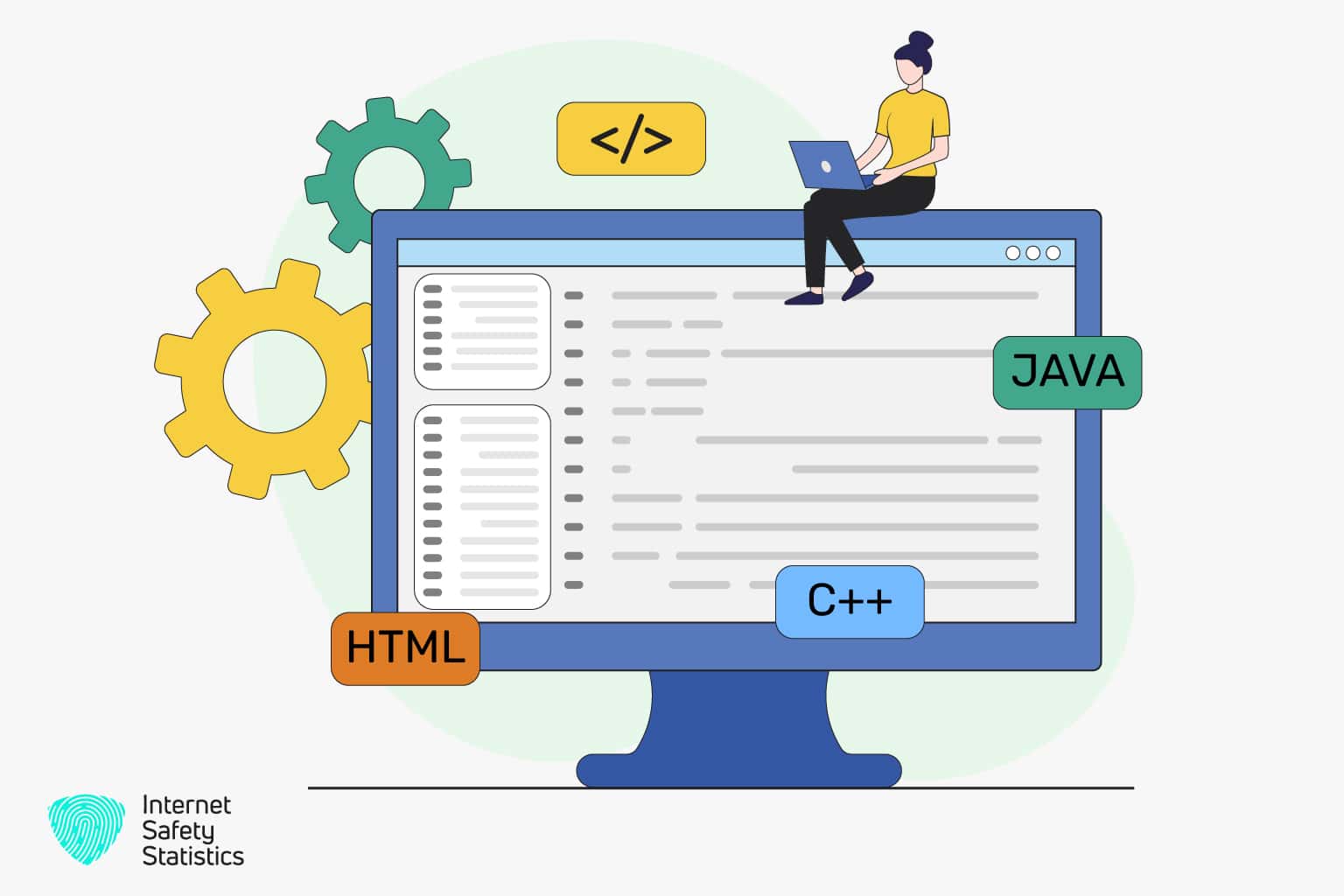
Ruby
Ruby is a dynamic, object-oriented computer language that Yukihiro Matsumoto introduced in 1995. It is designed to be easy to read and write, and its syntax emphasizes code expressiveness and simplicity.
Ruby is a high-level programming language that is easy to read and write. It is used in cybersecurity to build tools for automated testing, web application security testing, and network security testing.
Ruby is often used for web development, with several popular frameworks built on it, such as Ruby on Rails. It is also used for scripting, automation, and data analysis. Some key features of Ruby include its dynamic typing, which allows for flexibility in variable types, and its built-in garbage collection, which simplifies memory management for developers. Ruby also supports functional programming and has a large and active community contributing to its development and maintenance.
Ruby is known for its concise and readable code, which can reduce development time and improve code maintainability. It also strongly focuses on developer happiness and productivity, with features like mixins, closures, and meta-programming that allow code reusability and flexibility.
Ruby is open-source, meaning it is free to use and distribute, and developers can access and modify its code to suit their needs. Thanks to its simplicity, creativity, and community support, it has become more and more well-liked among coders.
PHP
Rasmus Lerdorf first published PHP, a server-side, dynamic computer language, in 1995. It is designed to be easy to learn and use for web development, and it is often used in conjunction with web frameworks such as Laravel, Symfony, and CodeIgniter.
A server-side programming language- PHP, that creates dynamic online sites, is used in cybersecurity to build web application security tools and scripts. PHP is widely used to develop dynamic web applications, such as content management systems, e-commerce websites, and social networking sites. It is also used for server-side scripting, command-line scripting, and general-purpose programming.
Some key features of PHP include its dynamic typing, which allows for flexibility in variable types, and its support for web development, including built-in functions for handling HTTP requests and responses. PHP also has a large and active community contributing to its development and maintenance.
Because of its popularity and short learning curve, PHP is popular among computer developers. It also has a wide range of libraries and frameworks, making it possible to develop complex web applications quickly.
Since PHP is open-source, it is available for unrestricted use and distribution, and developers can access and alter its source code to fit their purposes. As a result, it has gained popularity among web developers due to its ease of use, versatility, and community support.
Go
Go, also called Golang, is a computer language that Google first released in 2009. It is designed to be efficient, concise, and scalable, making it well-suited for building large-scale networked and distributed systems.
Go is a newer programming language that is becoming increasingly popular in cybersecurity. Its strong typing and garbage collection make it easy to write secure code. Go is often used to develop network tools and command-line utilities, making it a popular choice for developing security tools.
Go is a statically typed language with a grammar comparable to C. Still, it also has concurrency support and features like garbage collection, making it simpler to handle memory and create concurrent programmes. Some key features of Go include its built-in concurrency support, which allows for efficient and concurrent processing of data and computations, and its focus on simplicity and readability, which makes it easy for developers to write and maintain code.
Go is often used for building web servers, microservices, and networked systems, as well as for systems programming and command-line tools. Some popular frameworks built on Go include Gin, Echo, and Revel. Since Go is open-source, it is available for free use and distribution, and coders can access and alter its source code to fit their requirements. As a result, it has grown in popularity among programmers because of its efficiency, simplicity, and flexibility.
Rust
The first version of the modern systems computer language Rust was released in 2010 by Mozilla Research. It is intended to give low-level control over system resources while ensuring memory safety and avoiding frequent programming mistakes like buffer overflows and null pointer dereferences.
Rust is a systems computer language with a focus on performance and security. Its powerful memory safety features make it ideal for developing secure software. Rust is often used to develop low-level tools and operating systems, but it is also gaining popularity in the cybersecurity community for developing security tools.
Rust is a statically typed language that uses ownership and borrowing concepts to enforce memory safety and avoid common programming errors. It also includes built-in concurrency support and a growing set of standard libraries, making it well-suited for building scalable and efficient systems. Some key features of Rust include its low-level control over system resources, such as direct memory management and the ability to write low-level code with inline assembly, as well as its focus on performance and efficiency. Rust also includes a powerful package manager called Cargo, which makes it easy to manage dependencies and build projects.
Rust is often used for systems programming, such as building operating systems, networked servers, and embedded systems. It is also gaining popularity in web development due to its performance and memory safety guarantees. Some popular Rust frameworks and libraries include Rocket, Actix, and Tokio. Rust is open-source, meaning it is free to use and distribute, and developers can access and modify its code to suit their needs. Due to its mix of low-level management, memory safety, and speed, it has grown in favour among coders.
What Are the Best Cybersecurity Programming Languages?
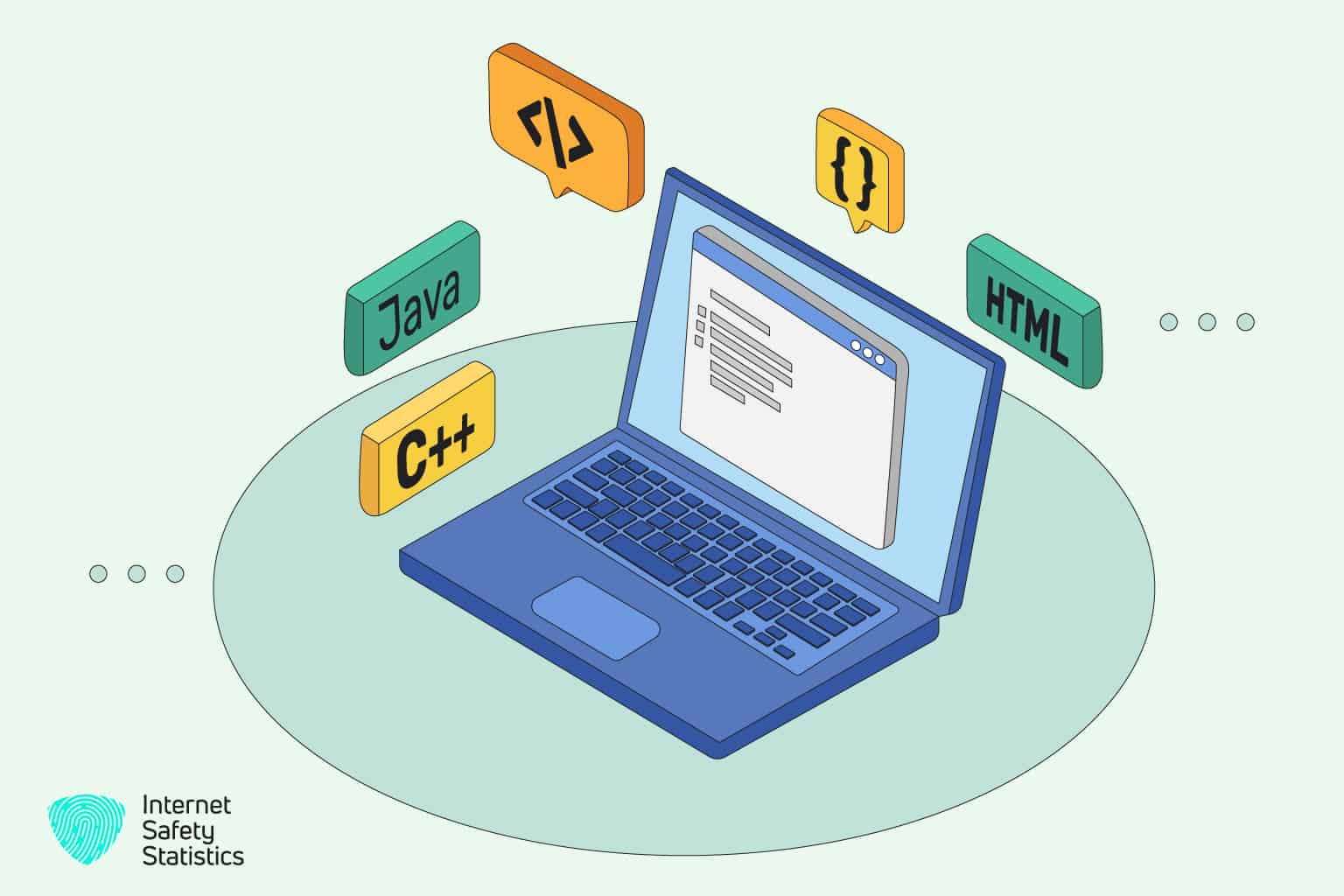
Several programming languages are used in cybersecurity, but not all are created equal. Here are some of the best cybersecurity programming languages:
- Python: Python is a powerful, simple-to-learn computer language. There are many tools and components for cybersecurity because of its sizable and vibrant developer community.
- C/C++: Low-level computer languages like C and C++ are employed to create high-performance apps. They are employed in cybercrime to create security instruments and software programmes needing restricted hardware access.
- Java: Java is a well-liked computer language employed to create safe apps. It is used in cybercrime to create forensic analysis, virus analysis, and network security testing tools.
- Ruby: High-level programming languages like Ruby are simple to understand and create. It is used in cybercrime to create network, automated, and online application security testing tools.
- Go: Google created the comparatively new computer language, Go. It is a quick and effective language used in cryptography to create high-performance apps.
- Perl: Perl is a high-level, interpreted language frequently employed for system management duties. Its strong regular expression support makes it perfect for text processing jobs like analysing log files. Developing security tools like network analysers and intruder detection systems frequently uses Perl.
- JavaScript: Popular computer language JavaScript is used to build interactive online sites. Due to its ubiquity and appeal, it is frequently used in online apps to leverage security flaws, making it a target for cyber-attacks. JavaScript can be used to create client-side security settings and browser add-ons, among other security tools.
Is Python or C++ Better for Cybersecurity?
Python and C++ are both commonly used in cybersecurity. High-level computer languages like Python are simple to learn and apply. It is great for building scripts and tools for automated testing, web application security testing, and network security testing. In addition, Python has a large and active community of developers, which means plenty of libraries and modules are available for cybersecurity.
C++ is a low-level programming language that is used to build high-performance applications. For example, it is excellent for building security tools and applications requiring low-level hardware access. C++ is faster than Python, but it has a steeper learning curve. In addition, C++ requires more expertise to write and maintain code, so it may not be the best choice for beginners or those uncomfortable with low-level programming.
Ultimately, the choice between Python and C++ comes down to personal preference and the project’s specific needs. For example, Python is a great choice for scripting and automation, while C++ is better for building performance-critical applications.
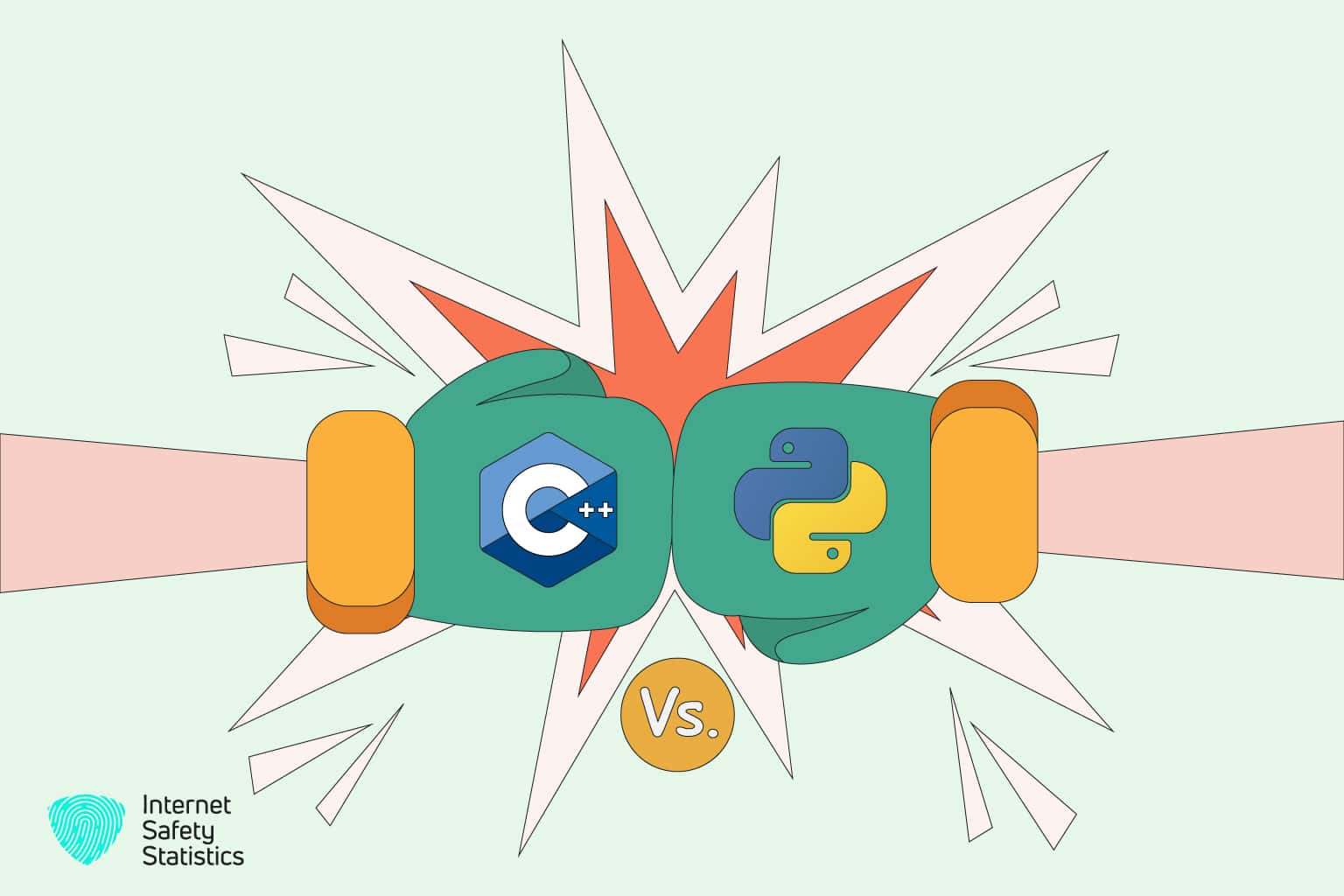
Is Python or Java Better for Cybersecurity?
Python and Java are popular programming languages used in cybersecurity, but which is better? Again, the answer depends on what you’re trying to achieve.
Python is a powerful, simple-to-learn computer language. There are many tools and components for cybersecurity because of its sizable and vibrant developer community. Python is great for building scripts and tools for automated testing, web application security testing, and network security testing.
On the other hand, Java is a popular programming language used to build secure applications. For example, it is used in cybersecurity to build tools for network security testing, malware analysis, and forensic analysis. In addition, Java is a compiled language, meaning it is faster than Python. It is also more secure than Python because it runs in a sandbox environment that prevents malicious code from executing.
Ultimately, the choice between Python and Java comes down to personal preference and the project’s specific needs. For example, Python is a great choice for scripting and automation, while Java is better for building secure applications.
Do Cybersecurity Professionals Need Programming Skills?
Yes, cybersecurity professionals need programming skills. Programming is a crucial skill for cybersecurity professionals because it enables them to build and maintain security tools and applications. In addition, cybersecurity professionals use programming to automate tasks, analyse data, and develop tools to detect and prevent cyberattacks. With programming skills, cybersecurity professionals can perform many tasks to protect systems from cyberattacks.
Furthermore, programming skills are becoming increasingly important in the cybersecurity industry. As more systems become connected and the volume of data that needs to be processed increases, cybersecurity professionals need to be able to write code that can handle the demands of the job. In addition, with the rise of artificial intelligence and machine learning, programming skills are becoming even more critical for cybersecurity professionals.
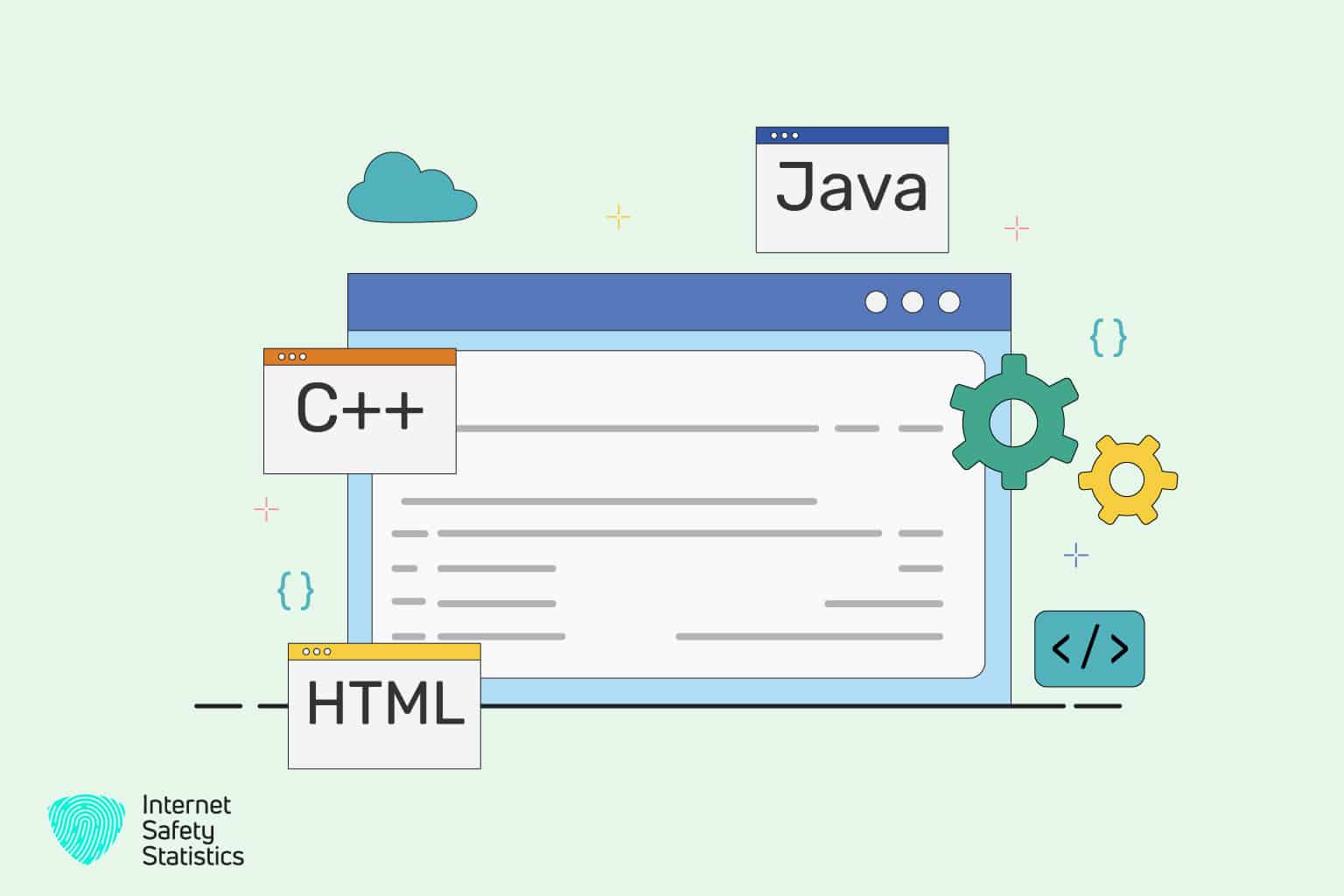
Conclusion
Programming languages are a crucial component of cybersecurity. Cybersecurity professionals use programming to build and maintain security tools and applications. Java is a popular language that is used to build secure applications. Ultimately, the choice of programming language is based on the project’s specific needs and the developer’s personal preferences.
Different languages have different strengths and weaknesses, making them suitable for different tasks. Choosing the right programming language for a cybersecurity project is important, as it can significantly impact the security and reliability of the software being developed. Cybersecurity professionals can make informed decisions when developing security software by understanding the features and capabilities of different programming languages.
